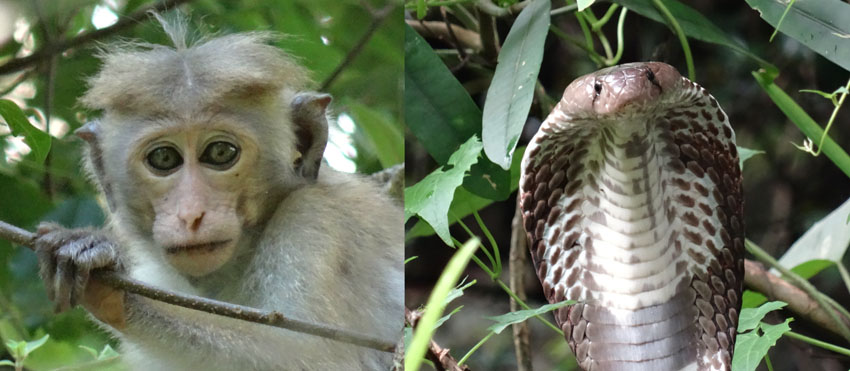
At 24 sites I got some 28 species, 13 of them new to science. In suitable habiats, abundances were often extremely high, especially of Sihala (=Pholcus). In a large rock crevice on Mt. Ethagala (below left) I estimated about 2,000 large specimens (below right: adult male), and uncounted numbers of small specimens.


Also ubiquitous but usually harder to find are Wanniyala (above, left), and members of Tissahamia (above, right). An overview of the pholcids of Sri Lanka has been published in the meantime (Huber 2019).

Some signs along the road were easy to understand (even though I suspect the sign on the left rather serves to keep tourists out of the Pidurutalagala Forest - a military area - than to warn from real danger), others looked nice but their meaning remained a mystery to me.

I thank Suresh Benjamin (Institute of Fundamental Studies, Kandy) for his help with permits, and the German Research Foundation for financial support (DFG project HU 980/11-1).
